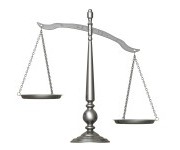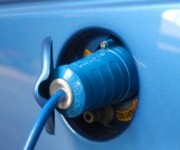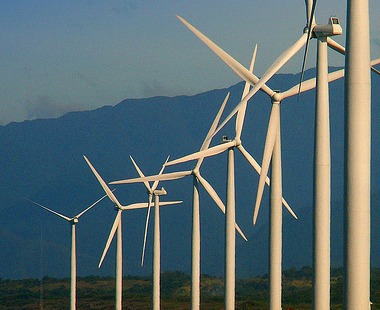renewable electricity
-
Here comes the sun – the chart Paul Krugman left out
This post originally appeared on Energy Self-Reliant States, a resource of the Institute for Local Self-Reliance’s New Rules Project. Nobel economist Paul Krugman made waves last month when his column “Here Comes the Sun” noted that the rapidly falling cost of solar electricity – “prices adjusted for inflation falling around 7 percent a year” – […]
-
Group purchase gets residential solar to grid parity in Los Angeles
This post originally appeared on Energy Self-Reliant States, a resource of the Institute for Local Self-Reliance’s New Rules Project. Back for a second round, the Open Neighborhoods organization in Los Angeles has organized another group purchase of residential and commercial solar PV, bringing the lifetime cost of solar well under the cost of grid electricity […]
-
Solar for Schools? Not so easy with tax-based solar incentives
You’re a city manager hoping to cut electricity costs at sewage treatment plant, a school administrator looking to power schools with solar, or a state park official needing an off-grid solar array for a remote ranger station. But unlike any private home or business, you can’t get 50% off using the federal tax incentives for […]
-
America and Germany Getting Their Clean Energy Just Desserts
Germany is the unquestioned world leader in renewable energy. By mid-2011, the European nation generated over 20 percent of its electricity from wind and solar power alone, and had created over 400,000 jobs in the industry. The sweet German success is no accident, however, and the following pie chart illustrates the results of a carefully […]
-
The problem with renewables and ‘cost parity’
At what point do hamburgers reach cost parity with salad? Assume for a moment that this is a serious question and try to figure out how you’d answer it. What is the relevant metric of comparison? Cost per pound? Cost per calorie? Outside of a few rabid vegans, no one seriously tries to do that […]
-
America’s energy future: iPads vs. typewriters with guns
This post originally appeared on Energy Self-Reliant States, a resource of the Institute for Local Self-Reliance’s New Rules Project. As Americans transition their electricity system to the 21st century, they should ask this question: Does it make sense to pursue strategies such as accelerating the development of new high-voltage power lines that reinforce an outdated […]
-
Feed-in tariffs responsible for most renewable energy
Cross-posted from CleanTechnica. Feed-in tariffs are a comprehensive renewable energy policy responsible for 64 percent of the world’s wind power and almost 90 percent of the world’s solar power (see charts below). With simplified grid connections, long-term contracts, and attractive prices for development, that’s policy that works. Image: David Jacobs Image: David Jacobs The basic […]
-
How electric vehicles can give a boost to local clean energy
A plug for plug-ins.This post originally appeared on Energy Self-Reliant States, a resource of the Institute for Local Self-Reliance’s New Rules Project. The Northwest could get an additional 12 percent of its electricity from local wind power if one in eight of the region’s cars used batteries. That’s the conclusion of a study [PDF] from […]
-
Wind could provide at least 25 percent of electricity for most states
At least 32 states could get 25 percent or more of their electricity from wind power generated within their own borders. This is an updated version of a map included in the report “Energy Self-Reliant States” from the Institute for Local Self-Reliance. Click on the map to see a larger version. State wind power potential […]





